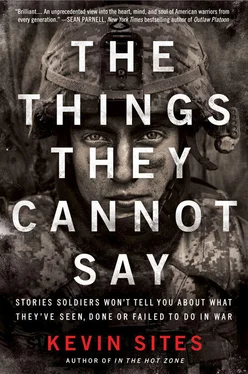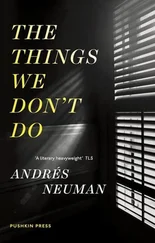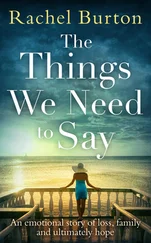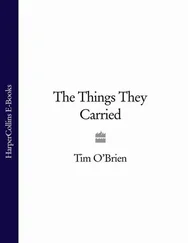When Ayala was fifteen, Bob moved the family from Texas to New Hampshire to take a job as a worship coordinator at Grace Fellowship Church. The young Ayala missed Texas but wasn’t going to let the move derail his plans. As a high school junior he joined the New Hampshire National Guard in an early-enlistment program that would allow him to finish school before beginning active duty. As a senior he trained with them. After completing high school in 2004 he went straight to basic training. Ayala knew what he wanted, infantry, but not the mechanized divisions. Tanks and Bradleys weren’t his style. He was going airborne. After basic training at Fort Benning in Georgia, he was sent to Fort Campbell in Kentucky to become part of the 101st Airborne Screaming Eagles, renowned for their bravery and high casualty rate during their World War II D-Day parachute drop behind German lines in occupied France. In October 2005, Michael Ayala would be in Iraq with the history-making division.
When Ayala reached the blue Bongo truck he felt sick to his stomach. The front end was lodged in the tree and black engine smoke and white radiator steam mixed in a hissing gas double helix. In a moment of cognitive dissonance, Ayala couldn’t believe it was all real. The men they had just shot weren’t Iraqi insurgents. They were fellow American soldiers. But how did this happen? It’s the thing soldiers dread most in the heat of battle: accidentally killing your own men. In formal military parlance it was called a “blue on blue” incident, or the weirdly ironic “friendly fire,” but for those in the middle of it, this kind of situation was also referred to by another commonly used military expression, FUBAR, “fucked up beyond all recognition.”
The men they had fired on were now either dead or wounded. The one who had slipped from the Bongo truck trying to escape, a lieutenant and the platoon leader, was lying in a ditch on the side of the road. Three others were still in the bed of the truck, an Iraqi interpreter who had been grazed by a round from Ayala’s unit, a radio operator whose left arm had been shredded by another and the unit’s own medic, hit in the leg by a ricochet.
“The medic was screaming at us,” Ayala says, “ ‘What the hell were you guys doing,’ while still hobbling around trying to treat the other two men even though he was wounded too.” But as Ayala approached the door to the truck’s cab, the medic’s voice became distant in Ayala’s mind, almost as if he was shouting from the inside of a thickly insulated room. Ayala’s hand reached for the passenger-side door handle and pulled it open. Inside there was blood splattered everywhere, but the two men were still sitting upright in their seats. They were dead, riddled with high-caliber rounds. Despite the fact that their faces had sunk into the indentations in their skulls, Ayala recognized them as two sergeants he’d seen around almost every day back at Camp Striker, Sergeant Adam Crain, the driver, and Staff Sergeant Phillip Nardone (their names have been changed to protect the privacy of their families) in the passenger seat. Despite his shock, Ayala knew there was nothing he could do for the men and he moved on to the survivors he could help. The medic from Ayala’s unit was already tending to the lieutenant who had tried to take cover in the ditch. He was the only member of the group who had not been hit by the “friendly fire.” He had been shot earlier during an engagement with insurgents, the very firefight the men in the speeding blue Bongo truck were trying to flee. He had been struck by a rifle round from an AK-47 that entered above his body armor through his upper left shoulder and exited his back. In the process, it collapsed his lung, a life-threatening emergency if not treated immediately. With plastic and tape, the medic fashioned a rectangular occlusive dressing, sealed over three ends with one side left open. This field dressing keeps outside air from being pulled into the lung cavity by forming an airtight seal when the officer breathes in but also allows air to escape when he exhales. Ayala spiked an IV bag filled with water and saline while the medic inserted a needle in the man’s arm.
After treating the lieutenant, Ayala and the medic moved down their triage line, next applying a tourniquet to the arm of the linebacker-sized radio operator whose very bulk may have helped him to survive his wounds. They patched up the medic’s leg and finally put a bandage where a bullet had grazed the head of the interpreter. When the soldier who had manned the M249 SAW in Ayala’s convoy learned what had happened he began to vomit. The .50 cal gunner wept. Their days of service in these or other wars, no matter how remarkable, no matter how brave or heroic their actions, would now be forever overshadowed by this moment, this honest but irreversible mistake. “If we had just come across them and the terrorists shot them up, it might not have affected us so much. But we were the ones who shot them.”
Since they didn’t have any body bags, Ayala and another soldier moved Crain’s and Nardone’s bodies from the truck cab and covered them with ponchos. To get to Crain’s body Ayala had to crawl across the blood-soaked front seat because the driver’s-side door was obstructed by the tree. When they moved Nardone, his hand, severed by bullets, fell to the ground. Ayala’s platoon leader called in a medevac to move the four wounded men first. Because of a delay with the second medevac, Ayala sat up all night with the two remaining bodies. A sad and eerie feeling came over him as he looked at the dark shapes lying on the stretchers at his feet. When the chopper finally arrived before sunrise the next morning, Ayala and his fellow soldiers pulled on their night-vision goggles so they could see the terrain as they carried the bodies a hundred meters away to the landing zone.
It would be a month before all the testimony was given and the investigation into the incident concluded. Ayala’s unit, 3rd Platoon of Alpha Company, was found to have acted appropriately given the circumstances of the incident. But the details of what actually happened to the men in the Bongo truck are like a veritable Rube Goldberg device in which every action led surely but implausibly to the next, culminating in a tragedy of the absurd. It began with the unit’s 2nd Platoon going on a foot patrol through a nearby village. One of the teams made contact with insurgents and exchanged fire. Their lieutenant was wounded in the firefight. But because their radio had also been hit, they had no way to call for an evacuation. Staff Sergeant Nardone took charge and commandeered the Iraqi Bongo truck, loaded in the wounded lieutenant and the rest of his men and headed for friendly lines. Hearing reports of a clash, Ayala’s unit was called out as the Quick Reaction Force to provide support to the units under attack. That’s when Ayala’s convoy and the Bongo truck began their deadly collision course. Nardone’s men covered their retreat by firing their M4s from the back of the Bongo truck. When Ayala’s unit saw the flashes, they believed they were being fired on and did what they were trained to do when encountering a hostile enemy—destroy them.
Before the report exonerated the soldiers for the “friendly fire” killings, tensions were high between Ayala’s 3rd Platoon, responsible for the shootings, and 2nd Platoon, whose members were the casualties in the incident.
“Everyone thought it was our fault. That we got trigger-happy,” says Ayala. “But after the report we all kind of breathed a sigh of relief.”
But the troubles wouldn’t end there. Immediately after the incident, Ayala and other members of his platoon had difficulty getting back to the business of war.
“I was really hesitant to pull the trigger, but luckily we weren’t in any ‘shoot or you die’–type deals,” says Ayala. “I really didn’t want to shoot unless I had to. I didn’t want to make the same mistake twice.”
Читать дальше












